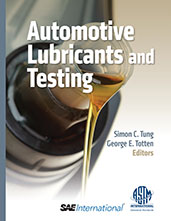Technical Paper
3-D LDV Measurement of In-Cylinder Air Flow in a 3.5L Four-Valve SI Engine
1995-02-01
950648
In-cylinder flows in a motored four-valve SI engine were examined by simultaneous three-component LDV measurement. The purpose of this study was to develop better physical understanding of in-cylinder flows and quantitative methods which correlate in-cylinder flows to engine performance. This study is believed to be the first simultaneous three-component LDV measurement of the air flow over a planar section of a four-valve piston-cylinder assembly. Special attention is paid to the tumble formation process, three-dimensional turbulent kinetic energy, and measurement of the tumble ratio. The influence of the induction system and the piston geometry are believed to have a significant effect on the in-cylinder flow characteristics. Using LDV measurement, the flows in two different piston top geometries were examined. One axial plane was selected to observe the effect of piston top geometries on the flow field in the combustion chamber.

